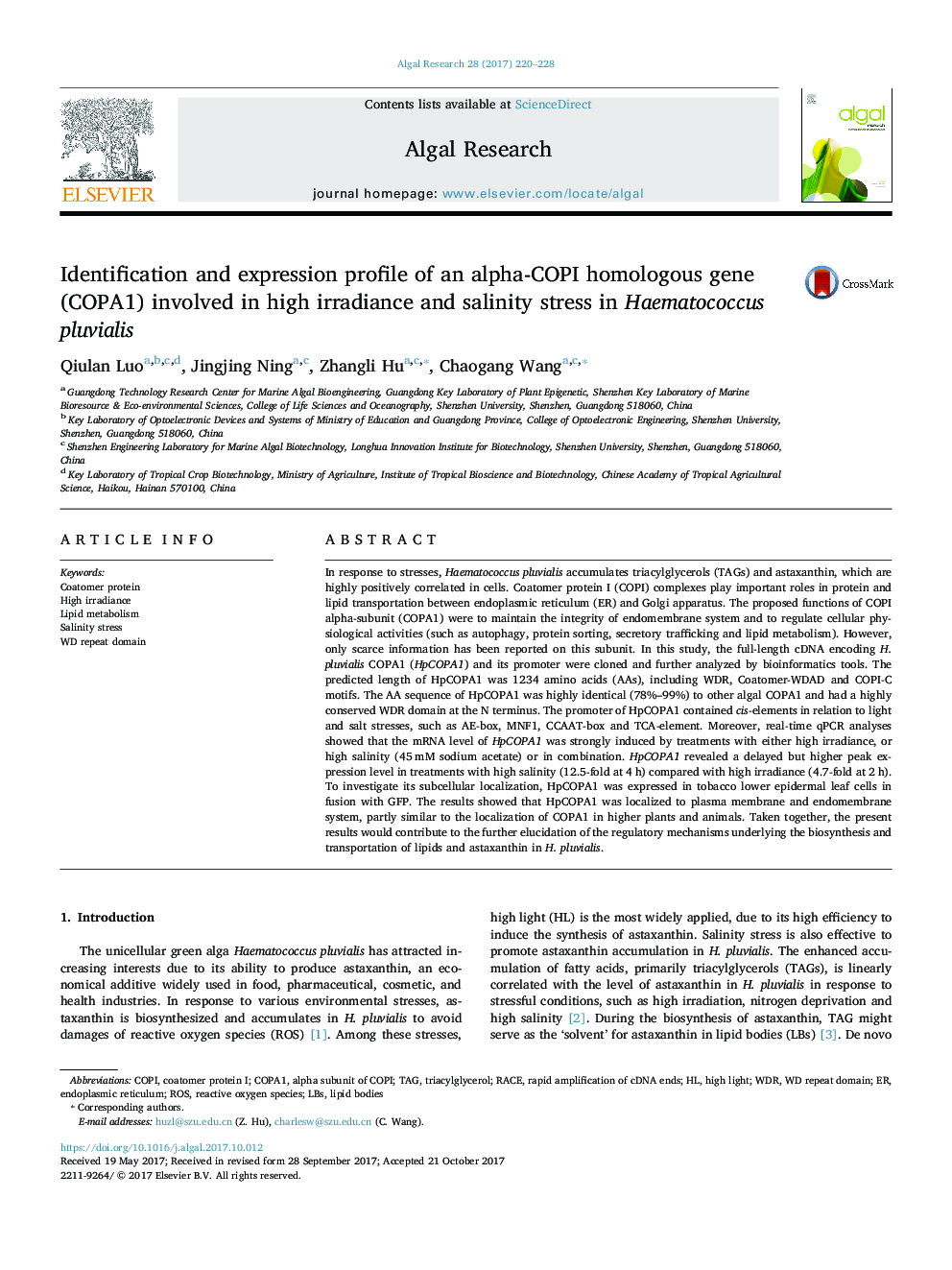| Article ID | Journal | Published Year | Pages | File Type |
|---|---|---|---|---|
| 8086229 | Algal Research | 2017 | 9 Pages |
Abstract
In response to stresses, Haematococcus pluvialis accumulates triacylglycerols (TAGs) and astaxanthin, which are highly positively correlated in cells. Coatomer protein I (COPI) complexes play important roles in protein and lipid transportation between endoplasmic reticulum (ER) and Golgi apparatus. The proposed functions of COPI alpha-subunit (COPA1) were to maintain the integrity of endomembrane system and to regulate cellular physiological activities (such as autophagy, protein sorting, secretory trafficking and lipid metabolism). However, only scarce information has been reported on this subunit. In this study, the full-length cDNA encoding H. pluvialis COPA1 (HpCOPA1) and its promoter were cloned and further analyzed by bioinformatics tools. The predicted length of HpCOPA1 was 1234 amino acids (AAs), including WDR, Coatomer-WDAD and COPI-C motifs. The AA sequence of HpCOPA1 was highly identical (78%-99%) to other algal COPA1 and had a highly conserved WDR domain at the N terminus. The promoter of HpCOPA1 contained cis-elements in relation to light and salt stresses, such as AE-box, MNF1, CCAAT-box and TCA-element. Moreover, real-time qPCR analyses showed that the mRNA level of HpCOPA1 was strongly induced by treatments with either high irradiance, or high salinity (45Â mM sodium acetate) or in combination. HpCOPA1 revealed a delayed but higher peak expression level in treatments with high salinity (12.5-fold at 4Â h) compared with high irradiance (4.7-fold at 2Â h). To investigate its subcellular localization, HpCOPA1 was expressed in tobacco lower epidermal leaf cells in fusion with GFP. The results showed that HpCOPA1 was localized to plasma membrane and endomembrane system, partly similar to the localization of COPA1 in higher plants and animals. Taken together, the present results would contribute to the further elucidation of the regulatory mechanisms underlying the biosynthesis and transportation of lipids and astaxanthin in H. pluvialis.
Keywords
Related Topics
Physical Sciences and Engineering
Energy
Renewable Energy, Sustainability and the Environment
Authors
Qiulan Luo, Jingjing Ning, Zhangli Hu, Chaogang Wang,
